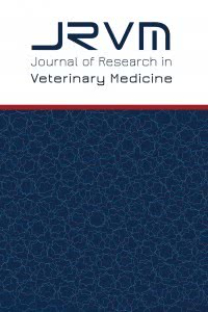A COMPARATIVE STUDY FOR HYPERSPECTRAL DATA CLASSIFICATION WITH DEEP LEARNING AND DIMENSIONALITY REDUCTION TECHNIQUES
___
- Arslan, O. ve Köse, R. (2006) Thermoeconomic optimization of insulation thickness considering condensed vapor in buildings”, Energy and Buildings, 38(12), 1400-1408. doi: 10.1016/j.enbuild.2006.02.012
- Atmaca, Ş.U. ve Kargıcı, S. (2006) Konya’da kış aylarında yapı malzemelerinde oluşan buhar geçişinin örnekle incelenmesi, Mühendis ve Makine, 47, 55-62.
- Bolattürk, A. (2008) Optimum insulation thicknesses for building walls with respect to cooling and heating degree-hours in the warmest zone of Turkey, Building and Environment, 43(6), 1055-1064. doi: 10.1016/j.buildenv.2007.02.014
- Chang, S.J. ve Kim, S. (2015) Hygrothermal performance of exterior wall structures using a heat, air and moisture modeling, Energy Procedia, 78, 3434-3439. doi: 10.1016/j.egypro.2015.12.328
- Çengel, Y. ve Ghajar, A. (2010) Heat and Mass Transfer: Fundamentals and Applications, McGraw Hill Inc., New York.
- Dağsöz, A.K. (1995) Türkiye’de Derece-Gün Sayıları, Ulusal Enerji Tasarruf Politikası, Yapılarda Isı Yalıtımı, İzocam Yayınları, İstanbul.
- Gürel, A.E. ve Cingiz, Z. (2011) Economical analysis of determination thermal insulation thickness for different external walls, Sakarya University Journal of Science, 15(1), 75-81.
- Heperkan, A.H., Bircan, M.M. ve Sevindir, M.K. (2001) Yapı malzemelerinde buhar difüzyonu ve yoğuşma, V. Ulusal Tesisat Mühendisliği Kongresi ve Sergisi, İzmir, 461-470.
- Kaynaklı, Ö. (2008) A study on residential heating energy requirement and optimum insulation thickness, Renewable Energy, 33, 1164-1172. doi: 10.1016/j.renene.2007.07.001
- Kaynaklı, Ö., Canbolat, A.S. ve Bademlioğlu, A.H. (2017) A study on the parameters affecting insulation thickness on external wall of buildings, International Journal of Mechanical and Production Engineering, 5(7): 81-84.
- Kaynaklı, O., Bademlioğlu, A.H. ve Ufat, H.T. (2018) Determination of optimum insulation thickness for different insulation applications considering condensation, Tehnicki Vjesnik, 25(Supplement 1), 32-42. doi: 10.17559/TV-20160402130509
- Kürekçi, N.A. (2016) Determination of optimum insulation thickness for building walls by using heating and cooling degree-day values of all Turkey’s provincial centers, Energy and Buildings, 118, 197-213. doi: 10.1016/j.enbuild.2016.03.004
- Liu, X., Chen, Y., Ge, H., Fazio, P. ve Chen, G. (2015) Numerical investigation for thermal performance of exterior walls of residential buildings with moisture transfer in hot summer and cold winter zone of China, Energy and Buildings, 93, 259-268. doi: 10.1016/j.enbuild.2015.02.016
- Meteoroloji Genel Müdürlüğü, İllerimize Ait Genel İstatistik Verileri. Erişim Adresi: https://mgm.gov.tr/veridegerlendirme/il-ve-ilceler-istatistik.aspx?k=A&m=BITLIS (Erişim Tarihi:23.11.2018)
- Moon, H.J., Ryu, S.H. ve Kim, J.T. (2014) The effect of moisture transportation on energy efficiency and IAQ in residential buildings, Energy and Buildings, 75, 439-446. doi: 10.1016/j.enbuild.2014.02.039
- TUİK, Türkiye İstatistik Kurumu; 2018 (www.tuik.gov.tr)
- You, S., Li, W., Ye, T., Hu, F. ve Zheng, W. (2017) Study on moisture condensation on the interior surface of buildings in high humidity climate, Building and Environment, 125, 39- 48. doi: 10.1016/j.buildenv.2017.08.041
- Zhu, P., Huckemann, V. ve Fisch, M.N. (2011) The optimum thickness and energy saving potential of external wall insulation in different climate zones of China, Procedia Engineering, 21, 608-616. doi: 10.1016/j.proeng.2011.11.2056
- ISSN: 2148-4147
- Yayın Aralığı: 3
- Başlangıç: 2002
- Yayıncı: BURSA ULUDAĞ ÜNİVERSİTESİ > MÜHENDİSLİK FAKÜLTESİ
Gizem KARAKAN GÜNAYDIN, Erhan Kenan ÇEVEN
PERSONEL SEÇİMİ İÇİN SEZGİSEL BULANIK SAYI TEMELLİ GRUP KARAR VERME YAKLAŞIMI
AYÇA GÜRARDA, Tuğba ZENGİN, Gökçe TOSUN
THE CHAOS-BASED APPROACHES FOR ACTUAL METAHEURISTIC ALGORITHMS
Yiğit Çağatay KUYU, FAHRİ VATANSEVER
ANALYSIS OF SURFACE PLASMON RESONANCE SENSING BASED ON PHASE-DETECTION IN THE INFRARED RANGE
Dental İmplant Ölçülerinin Yorulma Davranışına Etkisi: Sayısal Bir Yaklaşım
Mete Onur KAMAN, Hüsna TOPKAYA
DENTAL İMPLANT ÖLÇÜLERİNİN YORULMA DAVRANIŞINA ETKİSİ: SAYISAL BİR YAKLAŞIM
